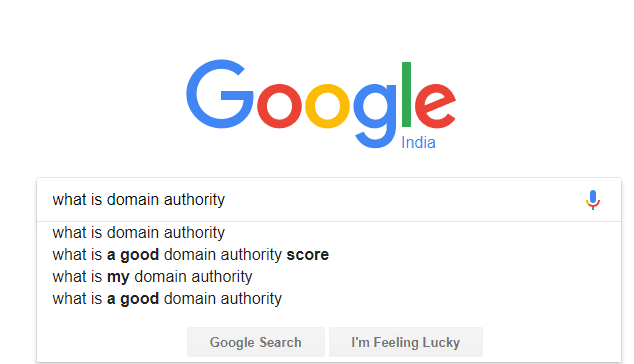Understanding Product Differentiation
Understanding the differentiation of goods and services is crucial for businesses aiming to establish a distinct market presence. This concept encompasses various strategies to showcase unique features that set a brand apart from its competitors.
Importance of Product Differentiation
Product differentiation is the process of distinguishing your brand from competitors by emphasizing unique attributes, benefits, or experiences (Fiveable). Effective differentiation helps create a distinctive identity for your brand, significantly influencing consumer perceptions and purchasing decisions. The ability to distinguish your offerings allows your brand to gain a competitive edge in the market, enabling you to command a larger market share based on consumer preferences related to factors like price, quality, durability, and brand image (Investopedia).
| Benefits of Product Differentiation |
|---|
| Enhanced Brand Recognition |
| Increased Customer Loyalty |
| Ability to Command Premium Pricing |
| Greater Market Share |
Types of Product Differentiation
Differentiation can be categorized into several types, each influencing consumer decision-making in unique ways. Common types include:
Vertical Differentiation: This type ranks products based on objective measurements, such as price or quality. For example, luxury cars are priced higher due to their perceived quality and associated features.
Horizontal Differentiation: This relates to subjective preferences, where products differ in features that appeal to different consumer preferences. For instance, various flavors of ice cream illustrate horizontal differentiation.
Mixed Differentiation: This combines both vertical and horizontal approaches, allowing for a more nuanced understanding of product offerings.
Apart from these main types, there are seven strategies you can employ for differentiation, which include:
- Price
- Quality
- Service
- Branding
- Functionality
- Ease of Use
- Audience Targeting (Amplitude)
Each form of differentiation helps you position your goods and services effectively against competitors. By leveraging these strategies, you can enhance your marketing efforts and improve your overall business strategy. To learn more about how to implement these strategies effectively, check out our resources on marketing strategy for goods and services and branding goods and services.
Brand Differentiation Strategies
To stand out in today’s competitive marketplace, you must focus on the differentiation of your goods and services. Employing effective brand differentiation strategies can help you establish a unique identity for your offerings and influence consumer behavior. Here are three key strategies to consider:
Leveraging Unique Attributes
Highlighting unique attributes of your product can effectively set your brand apart from competitors. This could involve superior quality, design, or sustainability practices. Specific features like eco-friendly materials or innovative technology can appeal to consumers looking for something special. For instance, if your product is made from organic materials or has a patented technology, these aspects should be prominently featured in your marketing efforts.
Using unique attributes can also enhance your brand’s perceived value, allowing you to justify premium pricing. Focus on crafting a clear narrative around what makes your product distinct to engage your target audience.
Promoting Innovative Features
Innovation plays a crucial role in differentiating your brand. By continuously developing and promoting new features or improvements, you can stay ahead of the curve in your industry. For example, incorporating the latest technology into your product can create a unique selling proposition (USP) that attracts consumers.
Consider how Tesla has distinguished itself in the automotive sector through groundbreaking features like self-driving capability and advanced battery technology. You can adopt a similar approach by featuring unique benefits that solve specific problems for your customers. Communicate these features through various channels, including social media and advertising, to create excitement around your innovations.
Emphasizing Exceptional Service
Exceptional customer service can be a powerful differentiator. Focusing on the customer experience can create strong emotional connections with your audience and foster brand loyalty. Emphasize aspects of your service that go above and beyond standard expectations, such as personalized support, easy returns, or loyalty programs.
You can also utilize customer testimonials and case studies to showcase the positive experiences of past clients, demonstrating the quality of your service. Building a reputation for exceptional service can set your brand apart and encourages repeat business and referrals.
To learn more about strategies that influence the differentiation of goods and services, consider exploring additional resources like branding goods and services and marketing strategy for goods and services. By integrating these brand differentiation strategies into your overall marketing plan, you can enhance your competitiveness in the marketplace.
Successful Examples of Product Differentiation
Understanding how companies successfully differentiate their goods and services can provide valuable insights for your own strategy. Here are three notable examples demonstrating effective product differentiation.
ClickUp’s Customization Options
ClickUp, a comprehensive project management and collaboration tool, has set itself apart by offering extensive customization options. Users can tailor their dashboard interface by adding or removing elements, which gives them complete control over how they organize their workflow. This level of personalization allows ClickUp to cater to diverse business needs and is a significant factor in its popularity among teams.
| Feature | Description |
|---|---|
| Custom Dashboards | Users can add/remove UI elements for personalized layout |
| Workflow Control | Offers tailored solutions for various project types |
| User Engagement | Increases user satisfaction through flexibility |
If you want to explore how customization can play a role in your offerings, look at implementing a service marketing strategy that emphasizes user control.
Ahrefs’ Educational Materials
Ahrefs, widely recognized as a leading SEO tool, has differentiated itself through its substantial investment in educational resources. The company provides an array of content that includes case studies, blog posts, product documentation, video tutorials, and webinars. By doing so, Ahrefs offers substantial value to its users, helping them to maximize the utility of the software.
| Educational Material | Type | Purpose |
|---|---|---|
| Case Studies | Written | Demonstrates real-world applications |
| Video Tutorials | Multimedia | Offers step-by-step guides |
| Webinars | Live/Recorded | Interactive learning sessions |
This educational approach not only improves customer competence but also reinforces Ahrefs’ position in the SEO market. You can similarly enhance the value proposition for goods and services by providing educational resources.
Apple’s Brand Image and Reputation
Apple has masterfully differentiated itself through a strong brand image and reputation. The company has cultivated a perception of innovation, emphasizing aesthetically pleasing and user-friendly products. Apple positions itself as a premium brand that appeals to a loyal customer base, which is willing to pay higher prices for its products.
| Brand Element | Impact |
|---|---|
| Innovation | Continuous release of cutting-edge technology |
| Aesthetic Design | Products characterized by sleek and modern aesthetics |
| Premium Positioning | Attracts brand loyalists despite higher price points |
Apple’s ability to differentiate through branding shows how critical perceived value is in the differentiation of goods and services. This strategy can be particularly effective when combined with target market analysis for goods and services.
By studying these successful examples of product differentiation, you can find inspiration for your own marketing strategies and begin to carve out a unique position in your marketplace.
Impact of Product Differentiation
Product differentiation plays a critical role in shaping your brand’s market presence. By effectively distinguishing your goods and services from competitors, you can foster brand loyalty and drive sales growth.
Building Brand Loyalty
Strong product differentiation is instrumental in cultivating brand loyalty. When you offer unique features or exceptional quality that resonates with customers, you enhance your brand’s memorability and encourage repeat purchases. A study by the Harvard Business Review reveals that companies achieving high market research metrics for brand loyalty grow revenues 2.5 times faster than industry peers, delivering two to five times the returns to shareholders over a decade (Investopedia).
| Impact on Brand Loyalty | Metrics |
|---|---|
| Revenue Growth | 2.5 times faster than industry peers |
| Shareholder Returns | 2-5 times over 10 years |
As customers develop a preference for your brand, they are less likely to switch to competitors, thus creating a solid customer base that supports long-term sustainability.
Increasing Sales and Revenues
Effective differentiation allows your business to command higher price points and potentially increase profits significantly. By offering added features, durability, appealing design, or exceptional customer service, you can position your products as premium offerings. This can lead to a more sustainable competitive advantage, allowing you to compete not only on price but also on quality and innovation (Mailchimp).
| Factors Affecting Sales and Revenue | Description |
|---|---|
| Price Point | Higher prices for differentiated products |
| Unique Features | Enhanced perceived value |
| Customer Service | Increased customer satisfaction |
This approach enables companies to alter consumer perception about the value of their products, even if the actual differences between offerings may be subtle (Investopedia). Consequently, a strategic focus on product differentiation can lead to increased market share and profitability.
By implementing solid differentiation strategies, you not only build brand loyalty among customers but also witness growth in sales and revenues, contributing to the overall success of your business. Explore more on marketing strategies for goods and services to enhance your approach further.
Implementing Product Differentiation Strategies
Establishing effective product differentiation strategies is vital for your business to stand out in a competitive marketplace. By clearly defining what makes your goods and services unique and strategically planning how to communicate these differences, you can capture the attention of your target audience and enhance your market position.
Identifying Unique Selling Propositions
The first step in implementing differentiation strategies is identifying your unique selling propositions (USPs). These are the specific features or benefits that set your offerings apart from competitors. An excellent way to recognize your USPs involves analyzing consumer preferences, competitor offerings, and market trends.
Consider the following characteristics when identifying your USPs:
| Characteristic | Description |
|---|---|
| Innovation | Offering cutting-edge technology or features. For example, Tesla’s focus on innovative battery operation distinguishes it from other auto brands (Investopedia). |
| Quality | Ensuring superior quality compared to similar products in the market. |
| Customization | Providing options for users to tailor products to their preferences, like ClickUp’s extensive customization features (Userpilot). |
| Educational Value | Offering valuable resources, such as tutorials or case studies, as seen in Ahrefs’ educational materials (Userpilot). |
Once you identify your USPs, ensure that they align with the demands and expectations of your target market. Utilizing tools like market research for goods and services can be instrumental in understanding consumer needs and preferences.
Strategic Planning for Differentiation
After identifying your USPs, developing a strategic plan for differentiation is crucial. Your plan should encompass the following key elements:
Target Market: Define the customer segments that will benefit most from your distinct offerings. Tailoring your messaging to resonate with these groups enhances the effectiveness of your differentiation strategy.
Positioning: Decide how you want to position your goods and services in the market. This involves creating a compelling value proposition that clearly communicates the benefits and unique features of your offerings.
Brand Messaging: Develop a marketing strategy that consistently communicates your USPs across various platforms. This includes using advertising goods and services and social media to engage your audience and build awareness.
Monitoring and Evaluation: Regularly assess the effectiveness of your differentiation strategies. Collect feedback from customers and analyze market trends to determine if adjustments are necessary.
By employing a well-thought-out strategic plan, you can effectively implement the differentiation of goods and services that resonates with your audience and positions your brand for long-term success. Ensuring an ongoing commitment to innovation and quality can solidify your competitive advantage in the marketplace.
Overcoming Challenges in Product Differentiation
Differentiation of goods and services is essential for gaining a competitive edge in the market. However, it comes with its own set of challenges. In this section, we will discuss two significant hurdles you may face: research and development investment, and competitor imitation.
Research and Development Investment
A primary challenge in product differentiation involves the substantial investment required in research and development (R&D). Companies must allocate resources to innovate and create unique products that stand out. This often means hiring specialized staff, purchasing advanced technology, and conducting comprehensive market research to understand consumer needs effectively.
| R&D Investment Areas | Description |
|---|---|
| Market Research | Understanding consumer preferences and behavioral trends. |
| Product Development | Creating innovative products based on research findings. |
| Testing and Prototyping | Ensuring product quality and appeal through continuous testing. |
| Marketing Strategy | Developing plans to successfully launch and promote differentiated products. |
Investing in R&D allows companies to develop unique selling propositions that resonate with consumers. Effective differentiation can lead to stronger brand loyalty, which in turn fosters growth—companies with high brand loyalty metrics grow revenues 2.5 times faster than their competitors (Investopedia).
Competitor Imitation
Another significant obstacle is the risk of imitation by competitors. Once you’ve successfully differentiated your product, there is always the possibility that rival companies will replicate your innovations or features. This poses a threat, as it can dilute your market share and make it more challenging to maintain your competitive edge.
To combat competitor imitation, you should focus on:
- Continuous Innovation: Regularly update and improve your products to stay ahead of competitors.
- Strong Branding: Create a recognizable brand image that consumers trust and prefer, making it harder for competitors to overshadow you.
- Patents and Trademarks: Secure legal protections for unique features or innovations you develop, making it harder for others to copy.
By addressing these challenges, you can better position your brand in the marketplace. For more insights, consider reviewing effective marketing strategies for goods and services, which can help enhance your differentiation efforts and drive business success.
The Role of Pricing in Differentiation
Pricing plays a crucial role in the differentiation of goods and services. It is not simply a matter of setting a number but involves developing a strategy that communicates value, quality, and uniqueness to your target market.
Justifying Higher Prices
A well-executed differentiation strategy can often justify higher prices for your products or services. When customers perceive a product as unique or superior, they are usually willing to pay a premium. This can be achieved by emphasizing unique features, exceptional service, or innovative attributes that set your offerings apart from competitors.
For instance, brands such as Lush have successfully justified higher prices by promoting their handmade, vegetarian, and ethically-sourced cosmetic products. Their marketing emphasizes not just the quality but also the ethical considerations of their offerings, allowing them to command higher price points among consumers who prioritize these values.
| Brand | Price Range | Unique Selling Proposition |
|---|---|---|
| Dollar Shave Club | $5 – $15 | Subscription-based service, convenience |
| Lush | $10 – $100 | Handmade, ethical sourcing, cruelty-free |
| Apple | $999 – $1,999 | Premium brand image, innovation, quality |
The table above illustrates how these brands effectively leverage price points while emphasizing their unique selling propositions.
Reducing Direct Competition
Setting a higher price for your differentiated products also serves to reduce direct competition. When you position your offerings as premium, competitors who target the lower price segment may be less inclined to compete directly. This allows you to cultivate a niche market that values quality, uniqueness, and superior service over a competitive price.
This strategy can successfully create a strong brand identity and maintain customer loyalty. As a result, you can also allocate more resources toward marketing and innovation, further differentiating your products. For more on how to implement effective pricing strategies, check out our article on pricing strategy for goods and services.
Emphasizing a strong value proposition, along with a well-defined pricing strategy, is vital for effective differentiation. This approach will enable you to attract your target market, maintain competitive advantages, and enhance overall profitability.
Marketing Strategies for Product Differentiation
To effectively differentiate your goods and services in a competitive market, implementing innovative marketing strategies is essential. You can leverage storytelling and visual effects, as well as utilize social media platforms to enhance the visibility and appeal of your offerings.
Leveraging Storytelling and Visual Effects
Storytelling is a powerful tool in marketing that enables you to connect emotionally with your audience. By sharing compelling narratives about your brand or products, you can create a memorable experience that resonates with consumers. Incorporating visual effects into your storytelling can further enhance the impact by making your message more engaging and accessible.
For instance, companies can also use humor, testimonials, and various marketing strategies with flexible pricing to attract customers. Recent trends highlight the effectiveness of platforms like TikTok in reaching audiences through creative storytelling and catchy visuals The Product Manager.
| Storytelling Elements | Benefits |
|---|---|
| Emotional Connection | Builds brand loyalty |
| Memorable Narratives | Enhances recall |
| Visual Engagement | Captures attention |
Focusing on these elements allows you to stand out in a crowded market, emphasizing the unique aspects of your products. Think about how iconic brands like Tesla have effectively differentiated themselves by emphasizing innovation and unique features Investopedia.
Utilizing Social Media Platforms
Social media is an invaluable tool for promoting the differentiation of goods and services. Platforms such as Instagram, Facebook, and TikTok offer you the opportunity to reach a wide audience and interact with them directly. By showcasing your products creatively and consistently on these platforms, you can build a strong online presence.
Utilizing various social media strategies includes:
- Engaging Content: Post visually appealing and thought-provoking content that highlights your products’ unique attributes.
- User-Generated Content: Encourage customers to share their experiences with your products, enhancing credibility and building community engagement.
- Targeted Advertising: Use analytics to reach specific demographics interested in your products, improving conversion rates.
Companies that effectively implement social media marketing often see greater brand loyalty and customer retention. According to a study by Harvard Business Review, businesses achieving high metrics for customer loyalty grow revenues 2.5 times faster than competitors Investopedia. This illustrates the importance of digital engagement in your marketing strategy.
By integrating storytelling, visual effects, and social media strategies, you can effectively differentiate your goods and services, positioning your brand favorably within your market. Explore other aspects of marketing through our links on branding goods and services, advertising goods and services, and online marketing for goods and services for a comprehensive approach to your marketing strategy.





















